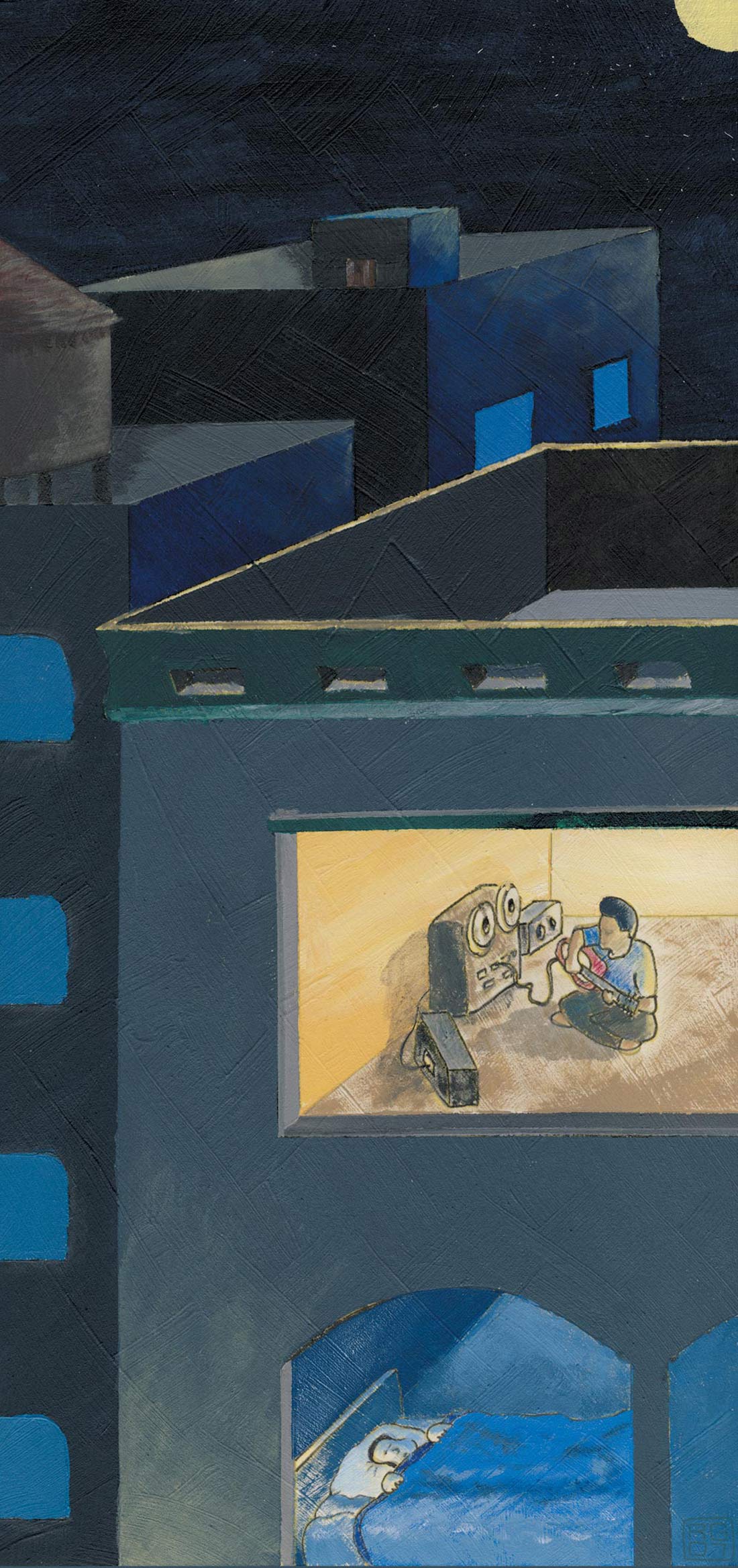I read the letter in the last issue of Tape Op complaining that the reviews in this magazine tend to skew towards the positive. I gave it some thought, and I consider it a fair observation. I would have loved to give the Roll Music RMS755 Super Stereo Compressor a negative review to conspicuously demonstrate my integrity and freedom from duress if I thought the product so deserved. Unfortunately, I love it.
Like everyone else who writes for Tape Op, I'm a freethinking, working engineer. I also have a strong distaste for equivocation. If I thought it sucked, I'd tell ya. But I like the RMS755 a lot. I really do. Sorry to disappoint.
I like the RMS755 because it works pretty much exactly as indicated by the manufacturer's own promotional literature and published specifications. It does what they say it does. I'm tempted to end my review right here. However, I feel that a more detailed description is in order, so that you, fair reader, can determine if this thing truly suits your working circumstance and aesthetic.
The RMS755 is designed specifically as a bus compressor. This means that it is intended to control complex program material (i.e. a whole mix or a subgroup of related sounds such as a drum kit) as opposed to individual signals. This shouldn't stop you from using the RMS755 to compress individual tracks, but you should know that it really excels in its ability to manage the dynamics of program material. "Program material" is just a dispassionate mastering term for "music". The RMS755 is intended for music.
Bus compressors are known for the different "flavors" they impart. The Neve 33609/2254 family (which includes the Daking FET II, the Chandler LTD-2, and a host of other units) is generally thought to be tough, weighty and muscular. The SSL family (which includes the Alan Smart compressors, among others) is considered snappy, agile, and "modern". The Fairchild family (which includes the Pendulum ES-8 and Manley Variable Mu, among many others) is thought to be thick, warm, and "rich". There are other families, of course, but I will spare you the comprehensive run-down. I'm of the opinion that these so-called flavors are exaggerated. "Warm" or "aggressive" are less intrinsic traits of any of these tools than functions of the musical context in which you apply them, and most importantly, the settings you choose. Used in a certain way, one could easily get, say, a Smart C1 to be "warm". That's certainly the story of Tchad Blake's work.
Insofar as it possesses a flavor, the RMS755 is probably closest to the "snappy/agile/modern" Smart/SSL family. I want to be careful not to mislead you, though; the RMS755 barely has an intrinsic tone at all. If it is part of the SSL/Smart family, it is the least aggressive sibling. For the most part, the RMS755 is clear, precise and neutral in nature.
Do not presume these words to be pejorative. Neutral doesn't mean weak. The RMS755 has a very strong grip! And clear doesn't mean boring. Using a tool like this to shape the ADSR kinetics of an entire mix is a total thrill!
Is it neurotic of me to feel compelled to defend the words "neutral" and "clear"? It seems that "hi-fi" is often portrayed as "dull" in a world where many tools are prized for how brilliantly rude they can be when you saturate, overdrive or abuse them. In my experience, freaking out the RMS755 with extreme or weird settings doesn't yield a particularly interesting result. If that's your interest, look elsewhere. If you use it with care and moderation, you get
an industrial strength, gain-boosted version of the mix you sent into it. Who doesn't find that appealing?
I will close with an observation about the RMS755 that I feel is worth sharing here. Every year, the staff engineers at my studio give a lecture at a local university that is intended to demystify the process of recording and hopefully inspire more people (particularly young women) to jump in. So I am familiar with and sympathetic to the anxieties and curiosities of the novice. If I were recommending a starter kit for a young, less-experienced engineer who wants to take the leap into better analog outboard compressors for their project studio, I would recommend the combination of an Empirical Labs Distressor (for individual instruments) and an RMS755 (for groups of instruments that you want to cohere). I feel that both of these units are accessibly-priced professional tools that allow you to really hear the effect of different ratios. I believe repeated use will help you develop an instinct as to when to use 2:1, 4:1, etc.
For most young people, just learning about compression ratios is mystifying. It's easy to regard it as cold math, which it is not. It's emotional. 5 dB of gain reduction achieved with 2:1 feels very different than 5 dB of gain reduction achieved by 10:1. In their respective ways, both the Distressor and the RMS755 are tools that will grow with you as your acumen deepens. It's hard to make either of them sound bad. And it's exhilarating to make them sound good. The Distressor is already venerated, ubiquitous, and unassailable, so the association is high praise for the RMS755. ($2325 MSRP; www.rollmusic.com)
Tape Op is a bi-monthly magazine devoted to the art of record making.




_disp_horizontal_bw.jpg)